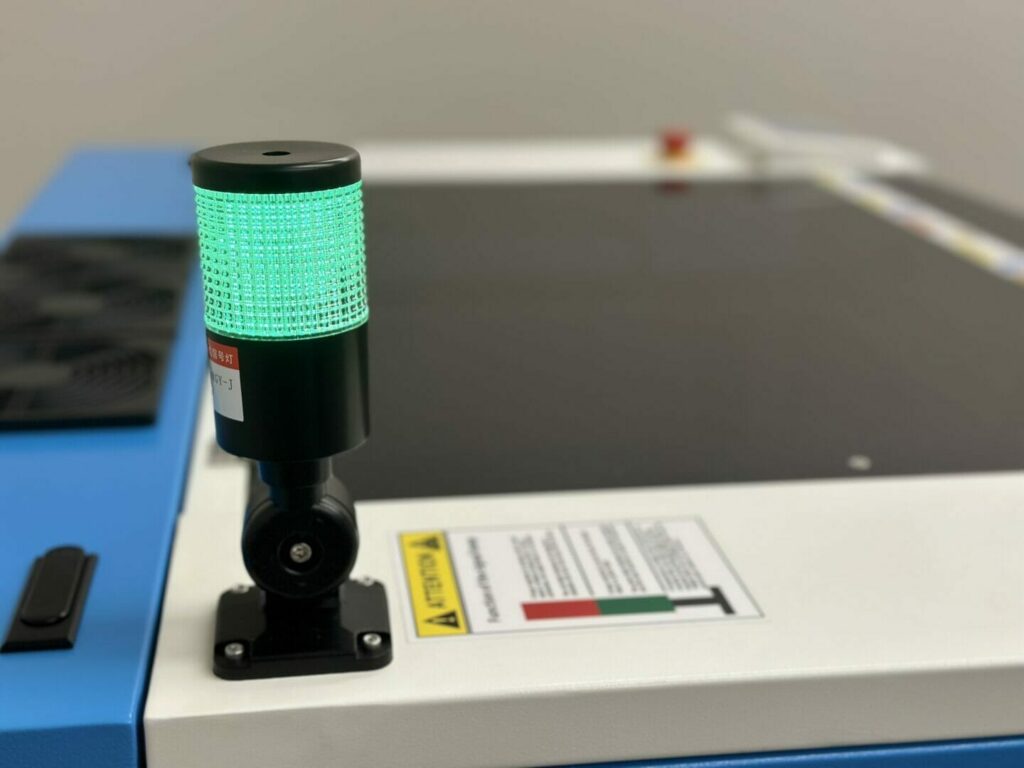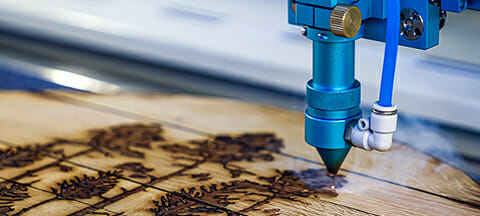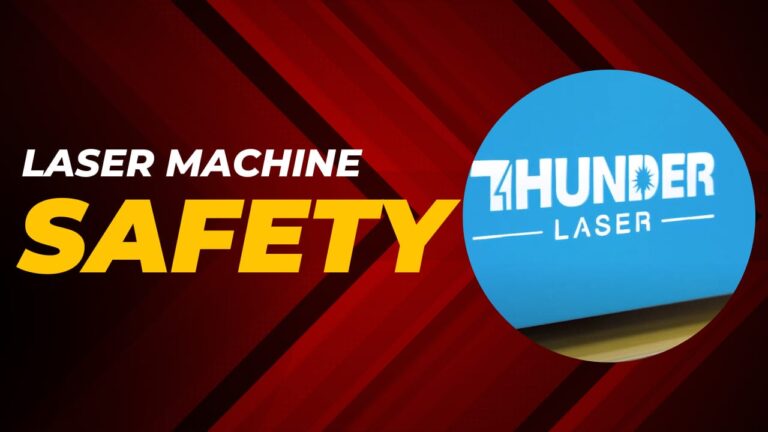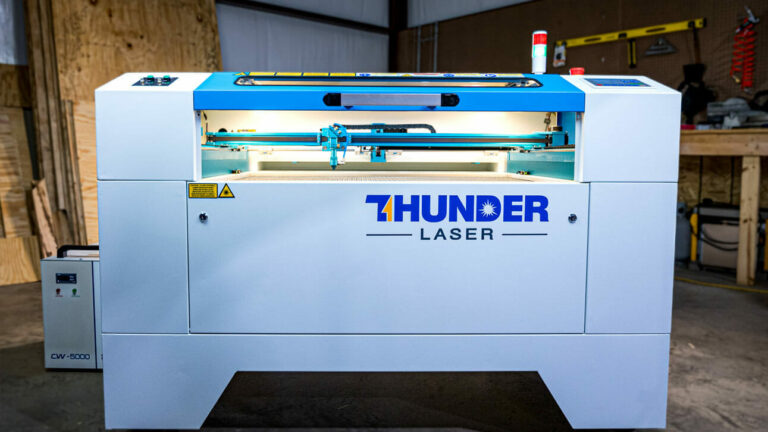Investing in a laser engraver can be a significant expense, so it’s important to keep your machine in top shape to ensure its longevity and optimal performance. Proper maintenance and cleaning can help extend the life of your machine and prevent costly repairs. In this article, we’ll explore essential laser engraver maintenance tips to help you keep your machine running smoothly for years to come.
Regular Cleaning
Regular cleaning is one of the most important aspects of maintaining your laser engraver. A dirty or clogged laser engraver can lead to reduced performance, inaccurate engraving, and even damage to the machine. That’s why it’s important to clean your laser engraver regularly, including the lens, mirror, and other components.
The lens is one of the most critical components of your laser engraver. It’s responsible for focusing the laser beam onto the material being engraved, and any debris or dirt on the lens can affect the quality of your engravings. To clean the lens, use a soft microfiber cloth or lens cleaning paper and a gentle lens cleaning solution. Avoid using paper towels or other rough materials that can scratch the lens surface. It’s also important to be gentle when cleaning the lens to avoid damaging it.
The mirror is another critical component of your laser engraver. It’s responsible for directing the laser beam onto the material being engraved. Like the lens, any dirt or debris on the mirror can affect the quality of your engravings. To clean the mirror, use a soft cloth or brush and a gentle cleaning solution. Avoid touching the mirror surface directly as oils from your fingers can affect its performance.
In addition to the lens and mirror, other components of your laser engraver also require regular cleaning. This includes the machine’s rails, bearings, and drive belts. Use a soft cloth or brush to remove any dust or debris from these components. If you notice any build-up of dirt or debris, you may need to use a specialized cleaning solution or lubricant to remove it.
When cleaning your laser engraver, it’s important to avoid using harsh chemicals or abrasive materials that can damage the machine. Stick to gentle cleaning solutions and soft cloths or brushes. It’s also a good idea to follow the manufacturer’s recommended cleaning guidelines to ensure you’re using the right materials and techniques.
Regular cleaning is a simple yet essential aspect of laser engraver maintenance. By taking the time to clean your machine regularly, you can ensure it’s performing at its best and producing high-quality engravings.
Lubrication
Lubrication is another important aspect of laser engraver maintenance. It helps keep the moving parts of your machine running smoothly and can prevent wear and tear on components. However, it’s important to use the right type of lubricant and to apply it correctly to avoid damaging your machine.
First, it’s important to identify the components that require lubrication. This typically includes the rails, bearings, and drive belts. Refer to your machine’s manual to determine the specific components that require lubrication and the recommended lubrication schedule.
When selecting a lubricant, it’s important to choose one that is specifically designed for your machine. Using the wrong type of lubricant can damage your machine and affect its performance. Most laser engravers require a silicone-based lubricant, which is designed to withstand high temperatures and prevent dust buildup.
Once you’ve selected the right lubricant, it’s important to apply it correctly. First, make sure the components that require lubrication are clean and free from any debris. Then, apply a small amount of lubricant to the component, using a clean cloth or applicator. Be careful not to over-apply the lubricant, as this can cause buildup and attract dust and debris.
It’s also important to follow the recommended lubrication schedule for your machine. Over-lubricating can cause excess buildup and attract dust and debris, while under-lubricating can cause components to wear down more quickly. Refer to your machine’s manual to determine the recommended lubrication schedule and follow it accordingly.
It’s worth noting that some laser engravers are designed to be maintenance-free and may not require lubrication. Refer to your machine’s manual or consult with the manufacturer to determine the specific maintenance requirements for your machine.
In summary, lubrication is an essential aspect of laser engraver maintenance. By selecting the right lubricant and applying it correctly, you can help prevent wear and tear on your machine’s components and extend its lifespan. Make sure to follow the recommended lubrication schedule and to use caution when applying lubricant to avoid damaging your machine.
Check and Replace Worn Parts
Regularly checking for and replacing worn or damaged parts is crucial for maintaining the optimal performance of your laser engraver. As your machine operates, its components can undergo wear and tear, causing them to deteriorate over time. This can have a significant impact on your machine’s performance, affecting the quality of your engravings, accuracy, and overall productivity.
Some of the most common components that require regular checking for wear and tear include the belts, bearings, and motors. Belts can become frayed, worn, or stretched, which can affect the accuracy of the machine’s movements. Worn or damaged bearings can cause friction and make movements less precise, while worn motors can lead to inconsistent or underpowered engraving.
It’s important to regularly inspect your machine for signs of wear or damage. This can include visual inspections for frayed belts, worn bearings, or loose connections. You may also notice signs of wear through changes in the sound or performance of your machine. For example, a squeaking noise during operation can indicate a worn bearing.
When you notice signs of wear or damage, it’s important to replace the affected parts promptly. Continuing to operate your machine with worn or damaged parts can lead to further damage and more significant repairs down the line.
When replacing parts, it’s important to use high-quality replacement parts that are specifically designed for your machine. Using generic or low-quality parts can affect the performance and longevity of your machine. Consult with the manufacturer or an authorized dealer to ensure you’re using the right parts for your machine.
In summary, regularly checking for and replacing worn or damaged parts is essential for maintaining the optimal performance and longevity of your laser engraver. Inspect your machine regularly for signs of wear or damage, and replace any affected parts promptly with high-quality replacement parts. By staying on top of your machine’s maintenance needs, you can ensure it continues to produce high-quality engravings and operate at peak performance for years to come.
Keep the Environment Clean
Keeping the environment around your laser engraver clean is crucial for ensuring its longevity and optimal performance. Dust, debris, and other contaminants can accumulate on your machine’s components and affect its performance. Additionally, operating your machine in an environment with high levels of dust or debris can lead to clogged filters and other issues that can affect its performance.
To keep your machine’s environment clean, it’s important to keep the area around your machine free from debris. This includes regularly vacuuming or sweeping the floor around your machine, as well as wiping down any surfaces that may accumulate dust or debris. If your machine is located in a particularly dusty or dirty area, you may want to consider installing air filters or using a dust collection system to reduce the amount of debris in the environment.
It’s also important to monitor the temperature and humidity levels in the operating area. Extreme temperature or humidity can affect your machine’s performance and lead to premature wear and tear on its components. To ensure optimal performance, keep the temperature within the recommended range for your machine. The recommended temperature range can vary depending on the manufacturer and the specific model of your machine, so be sure to consult the user manual or manufacturer for guidance.
Similarly, the recommended humidity range can also vary depending on the manufacturer and model of your machine. Keep the humidity levels in the operating area between 30% and 50% to avoid any adverse effects on your machine.
In summary, keeping the environment around your laser engraver clean and maintaining optimal temperature and humidity levels is crucial for ensuring its longevity and optimal performance. Regularly clean the area around your machine, monitor the temperature and humidity levels, and take steps to reduce any dust or debris in the environment. By following these guidelines, you can help ensure your laser engraver continues to perform at its best for years to come.
Monitor and Maintain Power Levels
Monitoring and maintaining the power levels of your laser engraver is a critical part of ensuring accurate and high-quality engravings. Power levels that are too high can damage the material being engraved, while levels that are too low can result in incomplete or inconsistent engraving. Therefore, it’s important to regularly monitor and maintain your machine’s power levels to ensure consistent and accurate results.
To monitor your machine’s power levels, you can use a power meter or a power sensor that attaches to the laser engraver. These tools allow you to measure the actual power output of your machine, ensuring that it’s delivering the correct amount of power for the material being engraved.
If you notice any fluctuations or inconsistencies in your machine’s power levels, it may be time to recalibrate or replace the power supply. A power supply that is no longer functioning properly can result in inconsistent or inaccurate power levels, affecting the quality of your engravings. Recalibration or replacement of the power supply may be necessary to restore your machine’s power levels to their proper levels.
It’s also important to maintain your machine’s power supply by keeping it clean and free of dust and debris. A dirty power supply can lead to performance issues and affect the accuracy of your machine’s power output. Regularly cleaning the power supply with a soft, dry cloth can help prevent dust buildup and ensure optimal performance.
In addition to monitoring and maintaining the power levels of your machine, it’s also important to adjust the power levels based on the material being engraved. Different materials require different power levels to achieve the desired results. For example, engraving on a soft material like leather may require a lower power level than engraving on a hard material like metal. Consult the manufacturer’s guidelines or experiment with different power levels to find the optimal power level for each material.
In summary, the monitoring and maintenance of the power levels of your laser engraver is crucial for achieving accurate and high-quality engravings. Use a power meter or sensor to measure your machine’s power output, and recalibrate or replace the power supply if necessary. Keep the power supply clean and adjust power levels based on the material being engraved to ensure optimal performance and results. By following these guidelines, you can help ensure your laser engraver continues to produce high-quality engravings for years to come.
Regular Maintenance and Inspection
Regular maintenance and inspection are crucial for ensuring the longevity and optimal performance of your laser engraver. By following the manufacturer’s recommended maintenance schedule and inspecting your machine regularly, you can help prevent costly repairs and ensure that your machine continues to operate at its best.
The manufacturer’s recommended maintenance schedule typically includes tasks such as cleaning, lubrication, and calibration. These tasks should be performed regularly to prevent buildup and ensure that your machine’s components are functioning properly. Neglecting these maintenance tasks can lead to performance issues and shorten the lifespan of your machine.
In addition to following the recommended maintenance schedule, it’s also important to inspect your machine regularly for signs of wear or damage. This includes visually inspecting your machine’s components for signs of wear or damage, such as frayed belts or worn bearings. You may also notice signs of wear through changes in the sound or performance of your machine. For example, a machine that is suddenly louder than usual may indicate a worn bearing.
It’s also important to keep a record of any repairs or maintenance performed on your machine. This can help you track its performance and identify any potential issues. By keeping a detailed record of repairs and maintenance, you can also ensure that you don’t miss any important maintenance tasks and stay on top of your machine’s needs.
Some examples of regular maintenance tasks for a laser engraver include:
- Cleaning the lens and mirrors to prevent debris buildup
- Lubricating the bearings to ensure smooth operation
- Calibrating the machine to ensure accurate engraving
- Checking the power supply and power levels for consistency
- Inspecting the belts and other components for signs of wear or damage
Regular maintenance and inspection are vital for your laser engraver’s longevity and performance. Follow the manufacturer’s maintenance schedule, inspect regularly for wear or damage, and keep records. By staying proactive, you ensure high-quality engravings and optimal performance for years.




